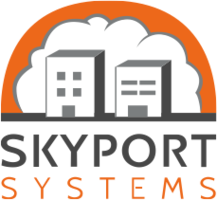2016 NFV Infrastructure and MANO Report Available Now
 Download now to learn the latest on the NFV Infrastructure and MANO.
Download now to learn the latest on the NFV Infrastructure and MANO.
 Download now to learn the latest on the NFV Infrastructure and MANO.
Download now to learn the latest on the NFV Infrastructure and MANO.
 Microservices pro tip: In space war, don't set your ships' health to zero.
Microservices pro tip: In space war, don't set your ships' health to zero.
Cellular carriers request FCC permits to test 5G in the 28 GHz and 39 GHz bands.
 HPE considers persistent memory to be a step in the direction of composable memory.
HPE considers persistent memory to be a step in the direction of composable memory.

The post Worth Reading: The road to 200g appeared first on 'net work.
Skyport Systems offers a trusted computing platform to securely host virtual machines. Big deal? Well, maybe more than it seems at first glance.

I was sitting in some Juniper training last week being told about their Zero Trust security capabilities (referred to in VMWare NSX terminology as micro-segmentation
), and as I listened I started thinking about zero trust
in the wider context of who can be relied upon when it comes to software, and even the hardware on which it runs.
Let’s face it, the events of the the last few years have brought to light for Americans that far from a need to fear what other nation states might be willing to do to get access to our data, the real threat may lie within. Juniper was in the news at the end of last year after the announcement that ScreenOS contained unauthorized
code suspected of being planted there by the NSA. And then in January 2016, Juniper announced that ScreenOS would be dropping the NSA-developed Dual_EC_DRBG random number generator which perhaps coincidentally has a known weakness in it, a vulnerability that was made even worse by an implementation change in ScreenOS to use a larger Continue reading
 It used a Mellanox NIC for the throughput.
It used a Mellanox NIC for the throughput.
Continuing our commitment to high quality open-source software, we’re happy to announce release 1.2 of CFSSL, our TLS/PKI Swiss Army knife. We haven’t written much about CFSSL here since we originally open sourced the project in 2014, so we thought we’d provide an update. In the last 20 months, we have added a ton of great features, and CFSSL has attracted an active community of users and contributors. Users range from large SaaS providers (Heroku) to game companies (Riot Games) and the newest Certificate Authority (Let’s Encrypt). For them and for CloudFlare, CFSSL has become a core tool for automating certificates and TLS configurations. With added support for configuration scanning, automated provisioning via the transport package, revocation, certificate transparency and PKCS#11, CFSSL is now even more powerful.
We’re also happy to announce CFSSL’s new home: cfssl.org. From there you can try out CFSSL’s user interface, download binaries, and test some of its features.
This 2013 National Security Agency (NSA) slide describing how data from Google’s internal network was collected by intelligence agencies was eye-opening—and shocking—to many technology companies. The idea that an attacker could read messages passed between services wasn’t technically groundbreaking, but it Continue reading